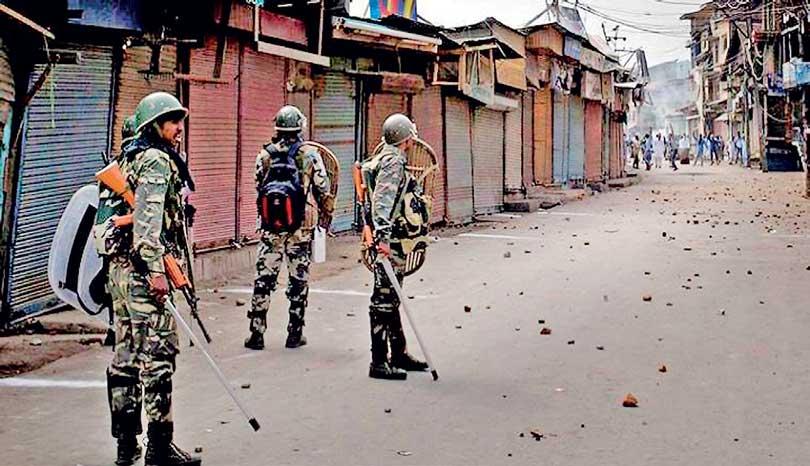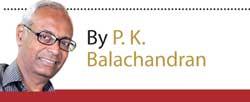13 Aug 2019 - {{hitsCtrl.values.hits}}

File Photo
 On August 5, the Narendra Modi-government in India took three momentous, unprecedented and simultaneous steps vis-à-vis the Muslim-majority North Indian State of Jammu and Kashmir(J and K) having borders with hostile Pakistan and China.
On August 5, the Narendra Modi-government in India took three momentous, unprecedented and simultaneous steps vis-à-vis the Muslim-majority North Indian State of Jammu and Kashmir(J and K) having borders with hostile Pakistan and China.
Firstly, it abrogated Art 370 and Art 35A of the Indian constitution which had given J and K a degree of autonomy and privileges most other Indian States did not enjoy. Secondly, it broke the State of J and K into two Union Territories (UTs), namely, Jammu and Kashmir, and Ladakh. In the Indian constitutional scheme, UTs are virtually under the control of the Centre. Thirdly, while the UT of J and K will have an elected legislature, that of Ladakh will not.
The Modi government’s action, enabled by its overwhelming majority in parliament, is like the curate’s egg, partly good and partly bad.
Positives
 New Delhi’s main argument in favour of the abrogation is that Art 370 and Art 35A had created an invidious and unsustainable distinction between J and K and the other States of India. The second argument is that the abrogation will fully integrate J and K with India. Integration will lift the State from the economic rut it is in.
New Delhi’s main argument in favour of the abrogation is that Art 370 and Art 35A had created an invidious and unsustainable distinction between J and K and the other States of India. The second argument is that the abrogation will fully integrate J and K with India. Integration will lift the State from the economic rut it is in.
Restrictions put by Art 370 and Art 35A were preventing the movement of capital and labour into J and K. The bar on outsiders buying immovable property placed by Art 35A was a major hindrance to investment. Under 35A, jobs and educational opportunities were denied to ‘Non-Permanent Residents ‘or ‘outsiders’ preventing skilled persons from settling in the State.
J and K had been heavily dependent on transfer of funds from the Centre. The 2018-2019, the J and K budget said that out of the State’s finances, 70% came as transfers from the Centre, of which 50% were grants and 20% were the State’ share of Central government taxes.
Though J and K scored well on social indicators, its economic indicators were poor. In 2016-17, its per capita GDP was INR 62,145 which was a half of Maharashtra’s. J and K lacked in private investment. There is only one public listed company with paid up capital of INR 100 million. The State had not been investing in industry, allocation for this having come down from INR 1,530 million in 2015-16 to INR 1,140 million in 2016-17. J and K’s share of new projects in India came down from 4.3% in 2013-14 to 0.02% in 2018-2019. Earlier, the average had been less than 1%.
The monthly average unemployment rate was 15% from 2016 to 2019, while the all-India average was 6.4%. Unemployment is high especially among educated youth. Most of the labour is in agriculture which is the least productive sector. The carpets and handicrafts sector is under-developed because of lack of access to Indian and foreign buyers. Earnings from tourism had plummeted by 23% between 2017 and 2018.
Integration with India is expected to help the growth of the industrial sector, boost the tourism sector and generate employment.Tighter integration with India will help improve security which is essential for economic development and tourism.
Negatives
However many doubt if the poor economic performance is entirely due to the restrictive Art 370 and Art 35A. It could well be due to the bad security situation in the State, which could be improved with a mix of creative political and military measures.
Art 370 and Art 35A were abrogated disregarding the letter and spirit of the Indian constitution.The set procedure was violated. Abrogation was also a breach of a solemn pledge made by the government of India to the Maharajah of Kashmir Hari Singh when the latter acceded to Hindu-majority India at the time of India’s independence in 1947, even though the population of his principality was overwhelmingly Muslim. If the ruler did not accede to Muslim-majority Pakistan or insist on remaining independent, it was because of the terms of accession to India mentioned in the “Instrument of Succession” signed by him and India’s Governor General Lord Mountbatten. The deal was fully backed by popular Indian and Kashmiri leaders of the time.
Through the Instrument of Accession, the Maharajah surrendered only four subjects to India, namely, Defence, External Affairs, Communication and Currency. This was enshrined in the constitution of India as Art 370 in 1949.Art 35A, which gave the “Permanent Residents” of J and K privileges not given to “outsiders” was included in the constitution in 1954.
Art 370 had a provision by which Central laws could be extended to J and K and by which Art 370 itself could be abolished. But to make any such change, the Centre was required to get the assent of the Constituent Assembly of J and K which had drafted its constitution. But since the J and K Constituent Assembly was dissolved in 1957 after it had passed the J and K constitution, the assent of the elected State Assembly was required.
However, over the years, Art 370 had been encroached upon by successive Central governments. 94 of the 97 subjects in the Central List had been made applicable to J and K, and 260 of the 395 Articles in the Indian constitution are now applicable to J and K. Even Art 356, by which the Centre could dismiss a State government, was extended to J and K. These were made possible because the leaderships of political parties in J and K were spineless and corrupt and hence, pliable.
While the demolition of Art 370 and Art 35A could be argued, the method used to do that was unconstitutional. New Delhi did not consult the State Assembly. Since the State Assembly had been dissolved and the State was under Governor’s rule, the Centre took the assent of the State Governor as the State’s assent. But the Governor is only a representative of the Center and not the elected representative of the people of J and K.
Likewise, J and K’s status was cut down to the status of UTs without the consent of the State Assembly. The opposition leaders found this to be an ominous sign of what might come in the future. An authoritarian regime at New Delhi, enjoying an unassailable parliamentary majority, can dissolve a State Assembly and tamper with the status of a State or divide it unilaterally.
About 11 States in India, especially in the tribal belt in the North East, have special constitutional rights under Art 371, which could well be tampered with or entirely denied by a powerful Centre. There are already protests in the North-Eastern States against the possibility of Art 371 being done away with.
Art 370 and Art 35A were preventing the movement of capital and labour into J and K. The bar on outsiders buying immovable property placed by Art 35A was a major hindrance to investment
External dimensions
China and Pakistan have stakes in the issue as both occupy vast areas of J and K. Pakistan seized territory in the 1948 war and is a supporter of the separatist movement in J and K. China encroached to take the Aksai Chin region of Ladakh. Pakistan and China have reportedly agreed to take the August 5 action to the UN Security Council, where China is a permanent member.
A recrudescence of unrest in the Kashmir valley cannot be ruled out and Islamic Pakistan will doubtless exploit it. UN interference could follow. With the US needing Pakistan to help it get out of the mess in Afghanistan, Washington could poke its nose into the J and K affair to help Pakistan.
With China coming out sharply against the Indian move, the “Wuhan spirit”, may begin to wear thin and prevent the two countries from settling the border dispute and narrow the yawning trade gap of US$ 60 billion.
19 Apr 2024 2 hours ago
18 Apr 2024 4 hours ago
18 Apr 2024 4 hours ago
18 Apr 2024 5 hours ago
18 Apr 2024 6 hours ago